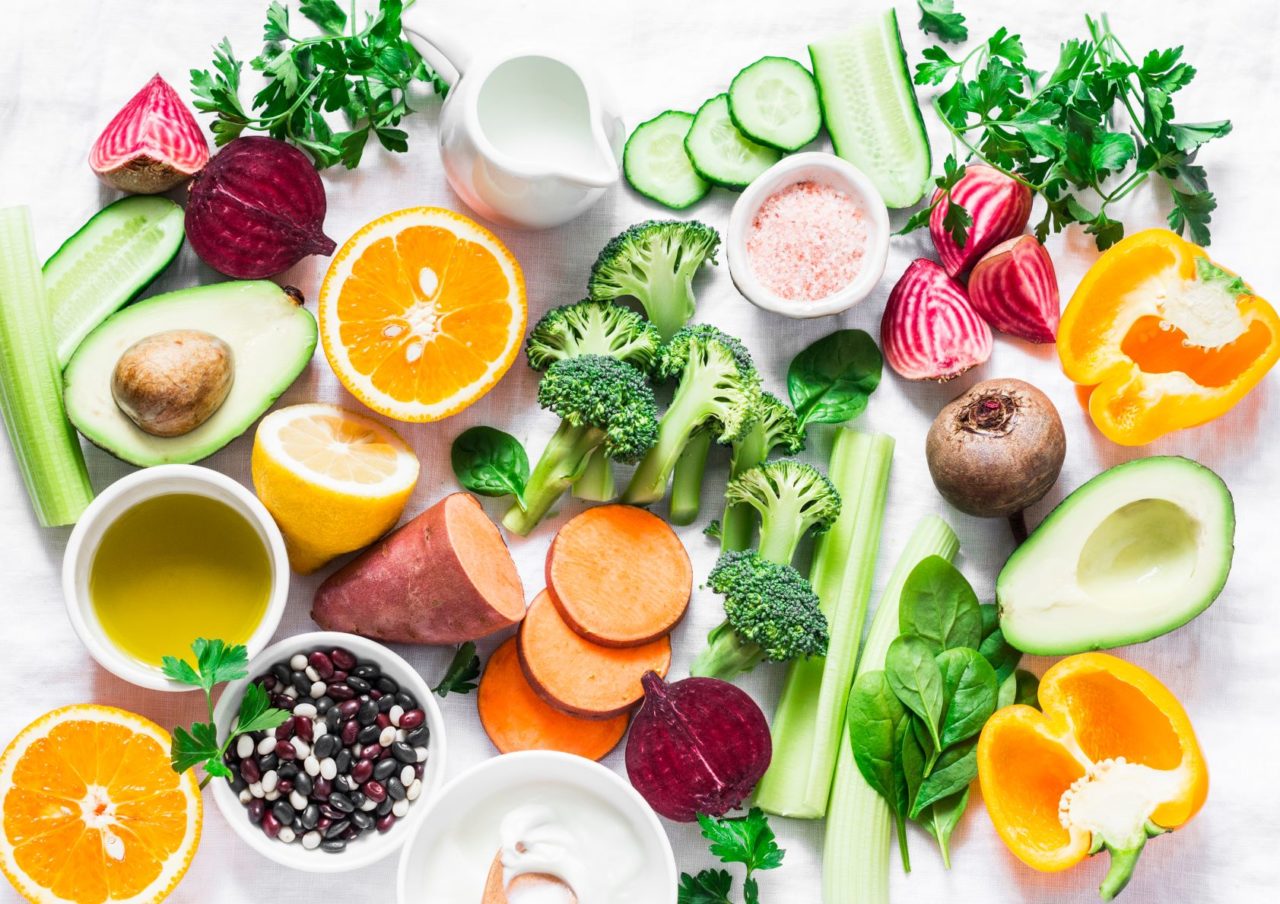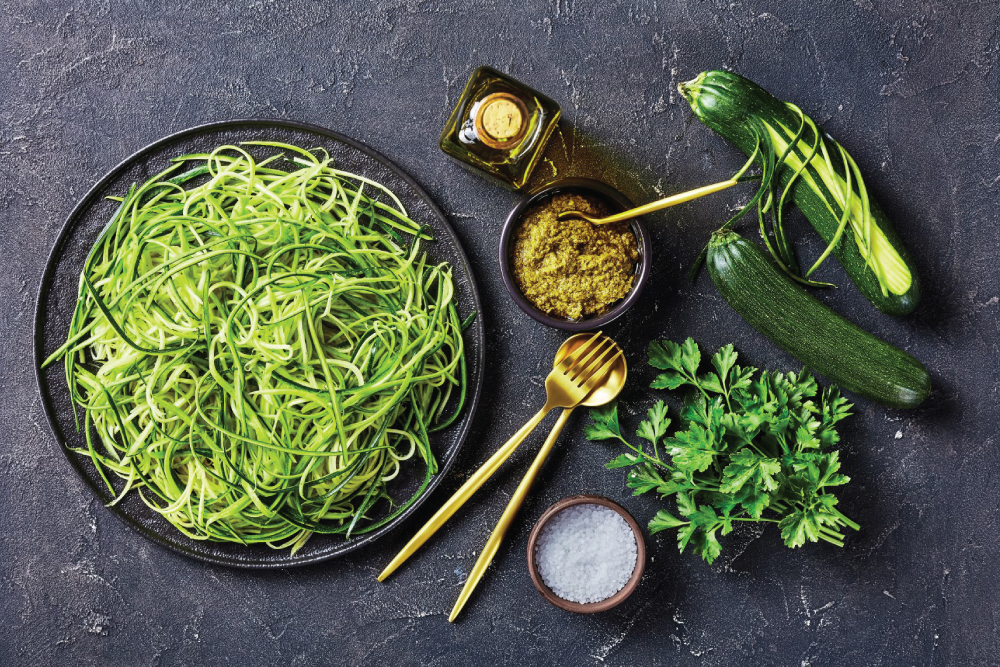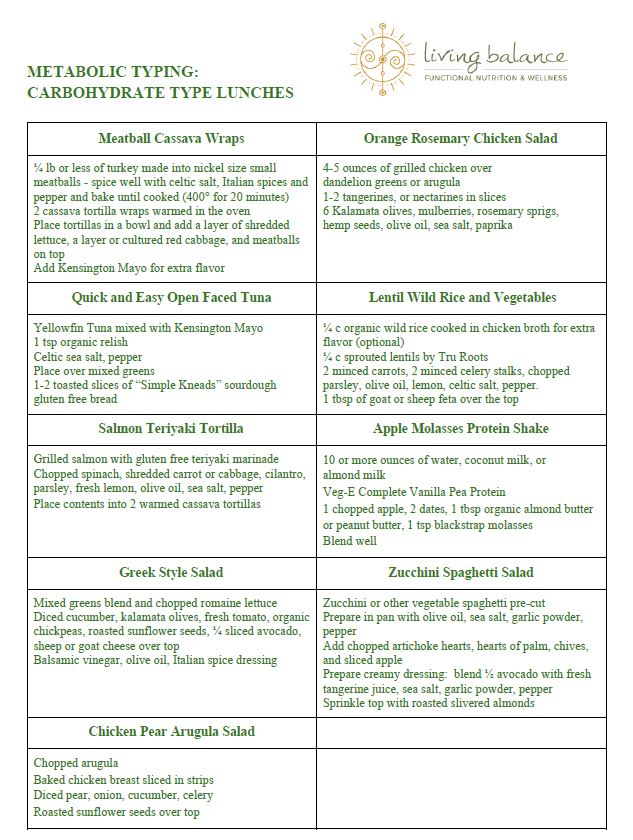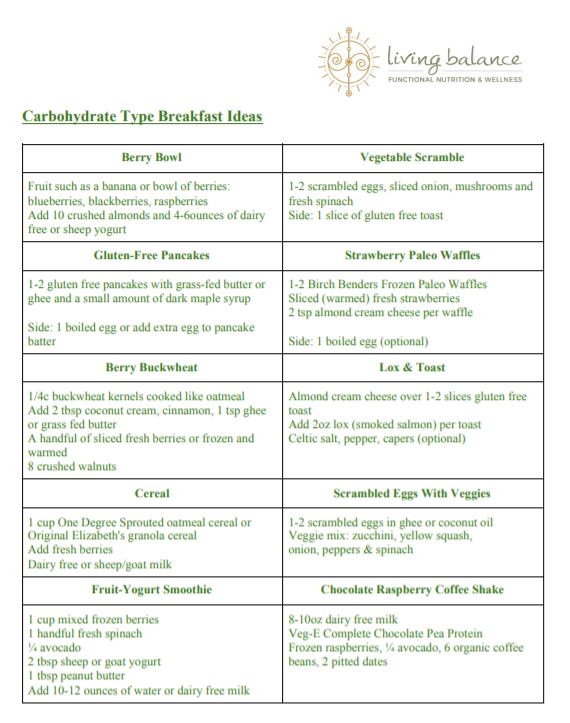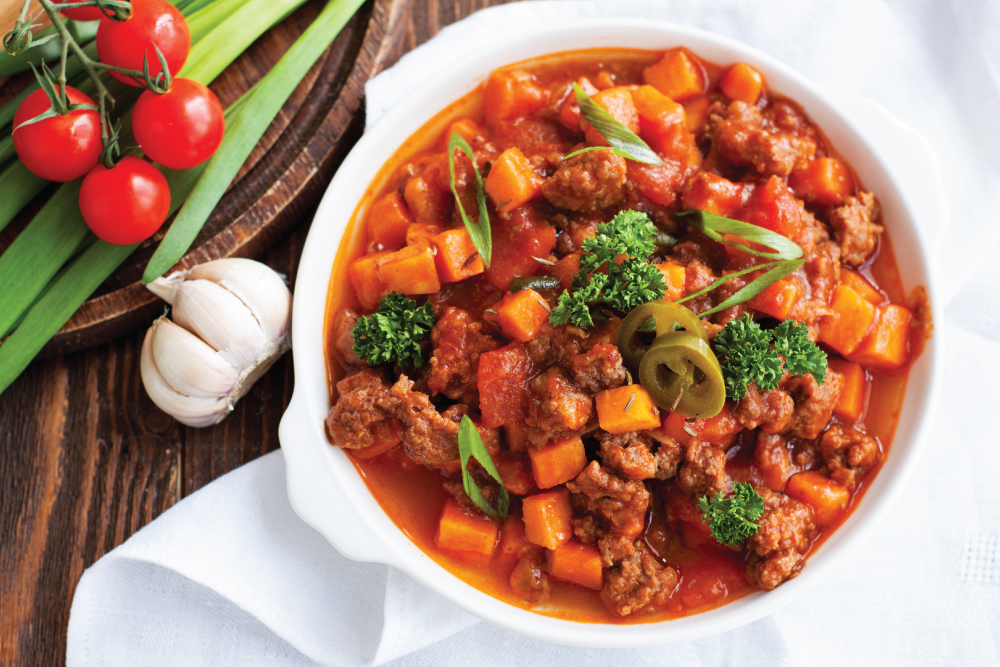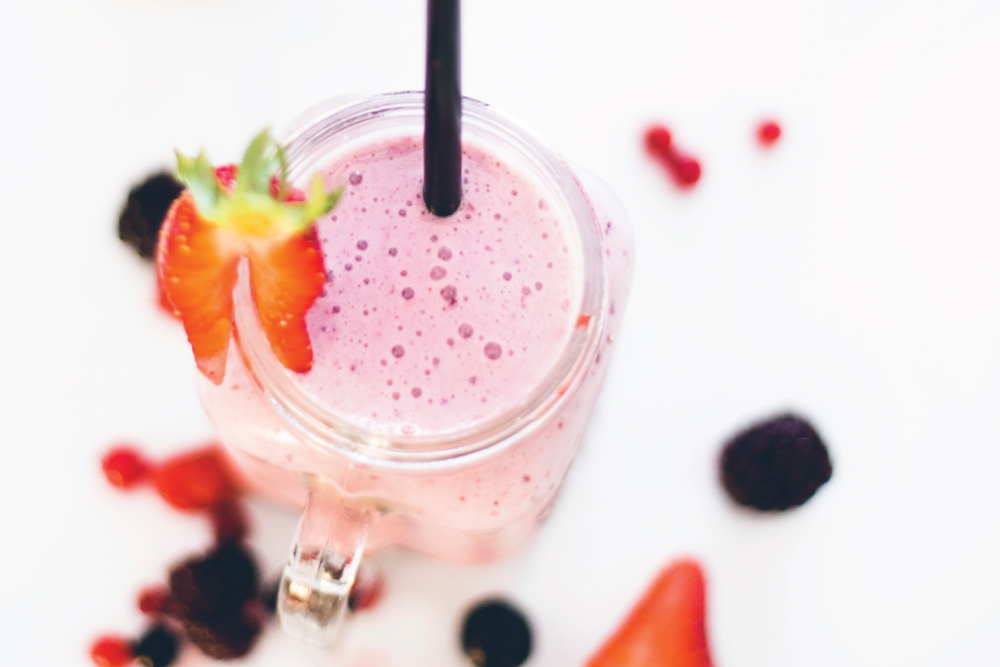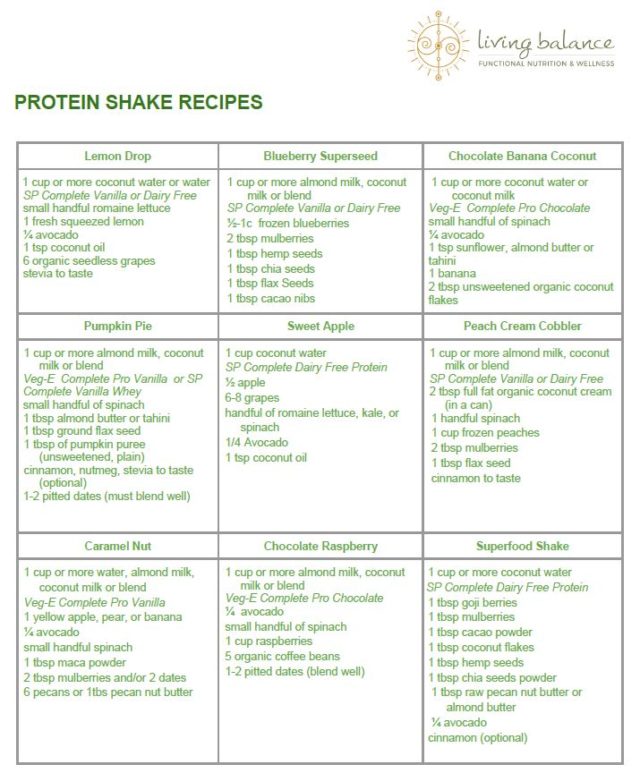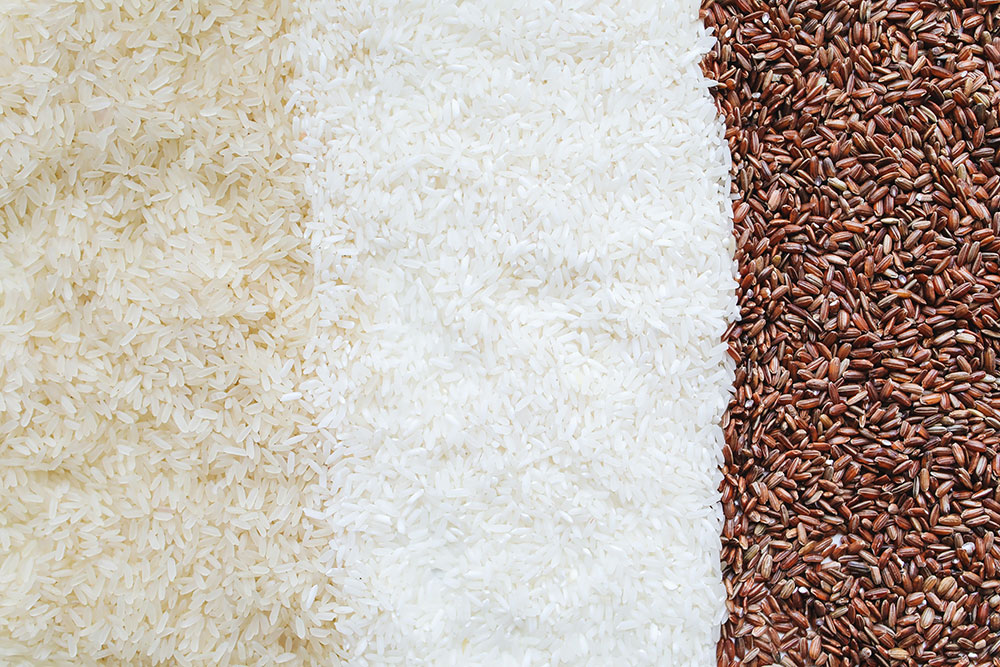Carbohydrates are one of the main dietary sources of energy for the body. Aside from Lactose (milk sugar), all carbohydrates are synthesized by plants.
There are two main types of carbohydrates: simple and complex. Simple carbohydrates consist mainly of fruits and sugars. Complex carbohydrates consist of vegetables, grains, and starches. Both simple and complex carbohydrates can be refined. Refined carbohydrates are grains, vegetables, starches, and/or fruits that have been altered in some way, i.e., nutrients removed or destroyed, exposed to extreme heat or drying, colors, dyes, chemicals, and/or hydrogenated fats added. This category of carbohydrates provides very little nutritional value to the body – merely acting as a “filler.” If abused, refined carbohydrates can lead to mild or severe weight gain, as well as other life threatening illnesses such as diabetes, cardiovascular disease, hypertension, and more. Types of foods that fit into this category include: Instant grains, or starches, (i.e., potato, oatmeal), certain gluten free items, breads, bagels, cereal, pastas, pastries, sugar or fruit that has been heated or nutrients removed /destroyed, i.e., honeys, syrups, jellies, juices, fruit roll-ups, canned fruit with syrup etc. It is important to minimize or avoid all refined carbohydrates. Focus on fresh organic fruits and vegetables and try to consume grains in their natural state.
Granted, most “healthy” breakfast cereals may be created with the best intentions, but when mass produced, they are heated to such high temperatures that nearly every living nutrient is diminished, so they are not much more than fiber, sugar, and maybe some added nutrients.(REF) Perhaps not the best way to start your day after all – at least on a regular basis. Refining aside, many conventional cereals have added sugars, and/or high fructose corn syrup, preservatives, FDC dyes, and synthetic flavors. In fact, The preservative BHT found in some cereal brands has been banned in England due to its link to kidney and liver damage. FDC dyes have been linked to ADD and ADHD, Synthetic flavors ….. So will refined cereal put excess weight on you? Maybe, maybe not. Will it give you the energy you need to start your day? Not a chance!
Breakfast tips:
If you simply cannot give up your morning cereal try this:
- Choose a puffed whole grain such as millet, kamut, amaranth, or brown rice
- Add unsweetened coconut milk, almond milk, or raw milk from a local farm
- Top with sliced in-season fruit, a handful of coconut flakes and a few crushed raw nuts for a more nutritionally complete way to start your day
Or maybe you’d prefer to start your day with some fresh whole oats:
- Soak your oats the night before in filtered water and lemon
- Change the water in the morning and simmer your oats for about 5-10minutes
- Scoop into a bowl and add fresh blueberries, or sliced apple, cinnamon, celtic sea salt, and a spoonful of coconut oil or ghee for healthy fats
- Top off with a handful of your favorite crushed nuts, ground flax seeds, or hemp seeds
Or do what I do and make your own non-grain cereal consisting of fresh fruit of your choice:
-
- ½ apple and a handful of fresh blueberries (or fruit of your choice)
- Add your fiber: 1 TBS of ground flax seed, 1 TBS of chia seeds
- Add your fat: 1 TBS of coconut flakes, and/or a handful of your favorite nuts
- Add your superfood: 1 TBS of gogi berries, Cocao nibs, and/or mulberries (optional)
- Add ¼ cubed avocado (optional)
- Top off with a delicious Vanilla Almond or coconut milk, a little cinnamon, and a drizzle of raw nut butter found at a local health food store (optional) DELISH!
Most granola bars, energy bars, cookies, and crackers are refined carbohydrates or processed proteins that can sit on your shelf for many months or more. If these items are not already loaded with sugar, they will typically convert to sugar very easily in the body. In addition, they are often ladled with hydrogenated oils, fractionated oils, trans fats, preservatives, artificial sweeteners, and flavors. For those brands that are organic and free of synthetic chemical ingredients, they are still “shelf happy.” Although much higher in nutrition, these types of foods are are OK for the occasional “bind,” but surely not a healthy regular choice for nutrient dense, life giving food. These types of package food items can be very habit forming, and can become a deterrent to preparing fresh meals when always accessible.
Recipe Tips:
Happy Trail Mix #1
- Mix raw nuts and seeds such as pumpkin seeds, sunflower seeds, almonds, pecans (if you can find them sprouted even better).
- Add gogi berries, mulberries, and cocoa nibs for a super rich nutrient dense snack.
Happy trail mix #2
- Plantain chips (with palm oil), large coconut flakes, cubed dried apple, raw pecans, roasted salted almonds, cacoa nibs
Remember, all carbohydrates are converted to sugar in the body! The more simple the carbohydrate, the faster it will convert to sugar. The more fiber and less starch, the slower it will convert to sugar. White rice and pasta are both high in starch with little nutrition. This means they easily convert to sugar in the body and are not much more than a “filler food.” Unfortunately they’re not even that filling. Have you ever noticed that despite the fact that you can shovel in quite a large amount of white rice and pasta, you’re still left feeling hungry or craving something (like sugar) a few hours later? That’s because your meal was virtually starch. Do that enough times and excess unwanted fat and blood sugar issues are the result! So aside from some occasional whole grain rice, or quinoa pasta, take it easy on the white sticky foods.
Recipe Tip:
- Pre-sprouted (Tru-Roots is a good brand), or plain soaked quinoa (can soak overnight or 4-5 hours before cooking- remember to change the water first).
- Or simply cook in desired time in water or chicken broth (usually about 15minutes)
- Add olive oil, coconut oil, or ghee
- Saute onions and stir fried vegetables to top
Ever notice the flour in your cabinet can sit there for literally years and years and never seem to spoil? Well that’s because it’s devoid of any vital nutrients – it’s a dead food. The bran and germ (nutritious living parts of the plant) have been removed to increase shelf life. This process, called “milling,” also removes some, if not all of the micro-nutrients present in the original grain. These would include dietary fiber, copper, zinc, magnesium, and the full gamut of B vitamins that grains are known for i.e, thiamine, riboflavin, niacin, pantothenic acid, pyridoxine, biotin, folic acid and cobalamin.(REF) In addition, white flours have often been bleached using chlorine dioxide or potassium bromated gas to remove even the slightest color from the natural grains they came from (7) Due to all of the nutrients lost in this process, the US Government mandated that certain vitamins be added back to avoid nutritional deficiencies. This is why you will often find the words “fortified” or “enriched” on breads and flours. These added vitamins are not nearly as complete and nutritious as what was originally in the grain.
Ever notice the flour in your cabinet can sit there for literally years and years and never seem to spoil? Well that’s because it’s devoid of any vital nutrients – it’s a dead food. The bran and germ (nutritious living parts of the plant) have been removed to increase shelf life. This process, called “milling,” also removes some, if not all of the micro-nutrients present in the original grain. These would include dietary fiber, copper, zinc, magnesium, and the full gamut of B vitamins that grains are known for i.e, thiamine, riboflavin, niacin, pantothenic acid, pyridoxine, biotin, folic acid and cobalamin.(REF) In addition, white flours have often been bleached using chlorine dioxide or potassium bromated gas to remove even the slightest color from the natural grains they came from (7) Due to all of the nutrients lost in this process, the US Government mandated that certain vitamins be added back to avoid nutritional deficiencies. This is why you will often find the words “fortified” or “enriched” on breads and flours. These added vitamins are not nearly as complete and nutritious as what was originally in the grain.
Sprouted grains have all of their nutrients intact, including higher amounts of protein, and essential fats, with no chemicals, oils, preservatives, or dyes added. In addition, sprouting decreases the amount of gluten present in grains, making them a viable choice for some mildly gluten sensitive individuals. If that’s not enough, sprouting makes grains easier to digest by breaking down the starches naturally present in the grain and neutralizing the phytic acid. Phytic acid is a protective coating on nuts, seeds, grains and legumes that prevents them from germinating prematurely in Nature. Phytic acid is excessively high in all grains that are not sprouted and can create digestive issues, inflammation and weight gain if eaten often (which again, is not hard to do).
Sprouting flour is not something that is new. In fact, up until the 20th Century it’s just the way things were done. (REF) In most other Countries, sprouting grains is still common practice. Grains can be allowed to sprout naturally in the field before made into flour, or they can be encouraged to sprout by soaking them in water. Sprouting increases the nutritional content of vitamins such as B’s C, and Carotenes (some up to 8 times!) (8). Some sprouted breads are not even pre-milled into flour, so the grains are still living and thriving, and will need to be kept in the refrigerator or freezer to maintain freshness rather than having the ability to sit on a shelf for years. Some brand names for sprouted grains are ‘Ezekiel’ and ‘Tru-Roots’.
Tip: Most people tend to over eat grains as their main source of carbohydrate in the diet. All grains sprouted or not are high in starch and will convert to sugar easily in the body. Excess sugar = excess fat and/or inflammation. In fact, grains are often fed excessively to farm animals to quickly fatten them up before slaughter.(REF?) Because it’s easy to over-consume grains, you may enjoy experimenting with a variety of nut flours instead. Muffins, pancakes, bread crumbs, and even crackers can all be made using nut flours rather than grain based flours. The result is a delicious, highly nutritious treat without the starch. Note: you can also blend some of your favorite nuts in a food processor and add spices for a nutritious coating for a fish or poultry dish. This is a great alternative to refined bread crumbs or gluten free diet.
Recipe:
Coconut / Almond Flour Pancakes (revised from the Primal Blueprint Cookbook by, Mark Sisson and Jennifer Meier). (REF)
- 3 eggs
- 3 tablespoons melted butter or coconut oil
- 1/4 cup plus 2 tablespoons coconut milk
- 1/2 teaspoon raw honey
- 1 teaspoon vanilla extract
- 1/4 teaspoon salt
- 1/2 cup coconut flour (I like using 1/2 almond flour with this recipe)
- 1 teaspoon baking powder
- 1/2 cup water
- flaked coconut, nuts, cinnamon (add to batter)
Whisk together eggs, oil, coconut milk, honey and vanilla. In a separate bowl, stir together dry ingredients then add the wet ingredients, stirring until smooth. Add the water to thin the batter out until it reaches your desired consistency. In a well buttered pan or griddle, cook pancakes until browned on both sides (about 3 minutes a side). Note: the pancakes will fall apart if too big – so keep them small. Also blueberries added to the batter works out great!
Recommended “live” breads you can find at your local Whole Foods:
- Nashoba Farms Sourdough Bread
- When Pigs Fly Sourdough Bread
- Sourdough Spelt by (?) In the freezer section
- Traditional Sourdough Rye by (?) In freezer section
- Ezekiel Bread (freezer section)
- Manna Bread




